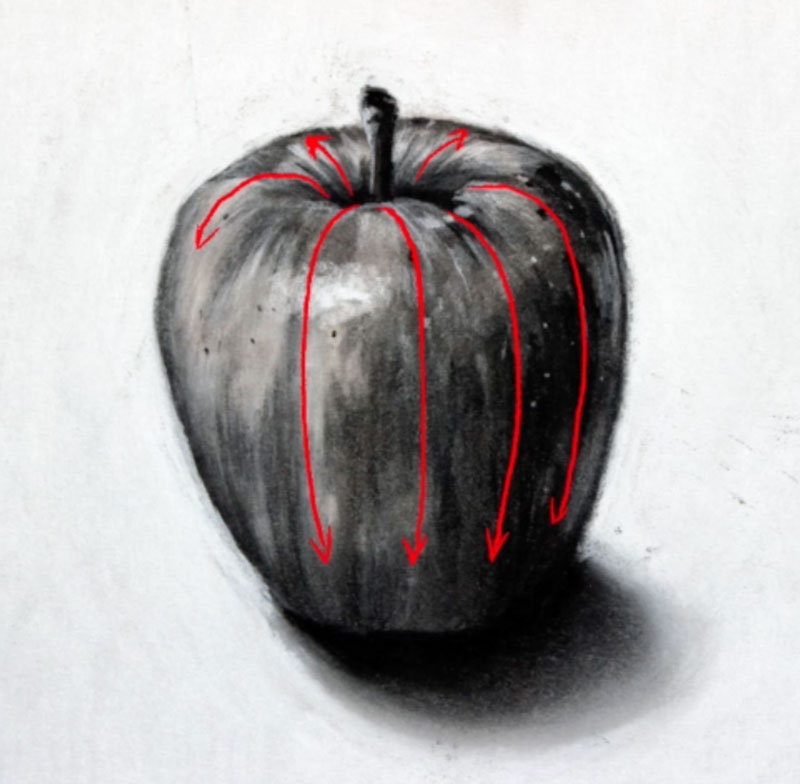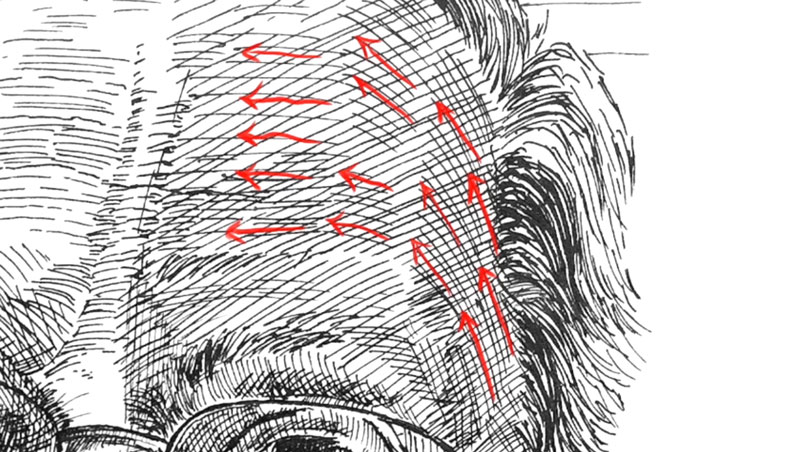 by Matt Fussell
by Matt FussellBefore we look at the concept of cross contour lines, we must first review the definition of contour lines. Contour lines are simply "outlines". We typically use contour lines to define the edges of objects and details within them. Contour lines are visible lines or lines defined by contrast. In other words, we can actually see contour lines in most circumstances.
Cross contour lines are implied lines that may or may not be visible on the subject. Instead of defining the edges and details of the subject, cross contour lines describe the form.
Cross contour lines flow over the form of the object. A good way to understand this concept is to take your finger and move it slowly over the surface of an object, following a straight path. Watch your finger as you move it and try to imagine that it is leaving a line as it moves. Your finger will move and change direction according to the form.
Another way to understand this concept is to look at a topographical map. Lines on a typographical map are closer together in locations where the elevation changes. We can understand the form of the terrain by the lines that are printed on the map.

But the best way to understand the concept of cross contour lines is to simply practice drawing them by observing a subject. Simple objects, like an apple, work best if you are new to this concept.

There is practical reason for understanding cross contour lines. This concept is important in communicating form in your drawings and paintings and can help you make smart decisions regarding the direction of your stroke - whether it be with a pencil, pen, or brush.
While cross contour lines can flow in generally any direction, in most circumstances, you'll want to consider lines that flow vertically or horizontally around the form.

The brush strokes or marks made with a drawing medium are more effective in communicating the form of the subject if they flow with the cross contour lines. Just like if you were to run your finger over the form, these strokes will change direction in the same manner. This is true for any drawing or painting medium.

The strokes that are made with a pencil or a brush should flow in harmony with the cross contours of the subject and in turn, communicate more about the form of the object. When combined with a consistent use of value, the illusion of form in a drawing or painting is easily achieved.